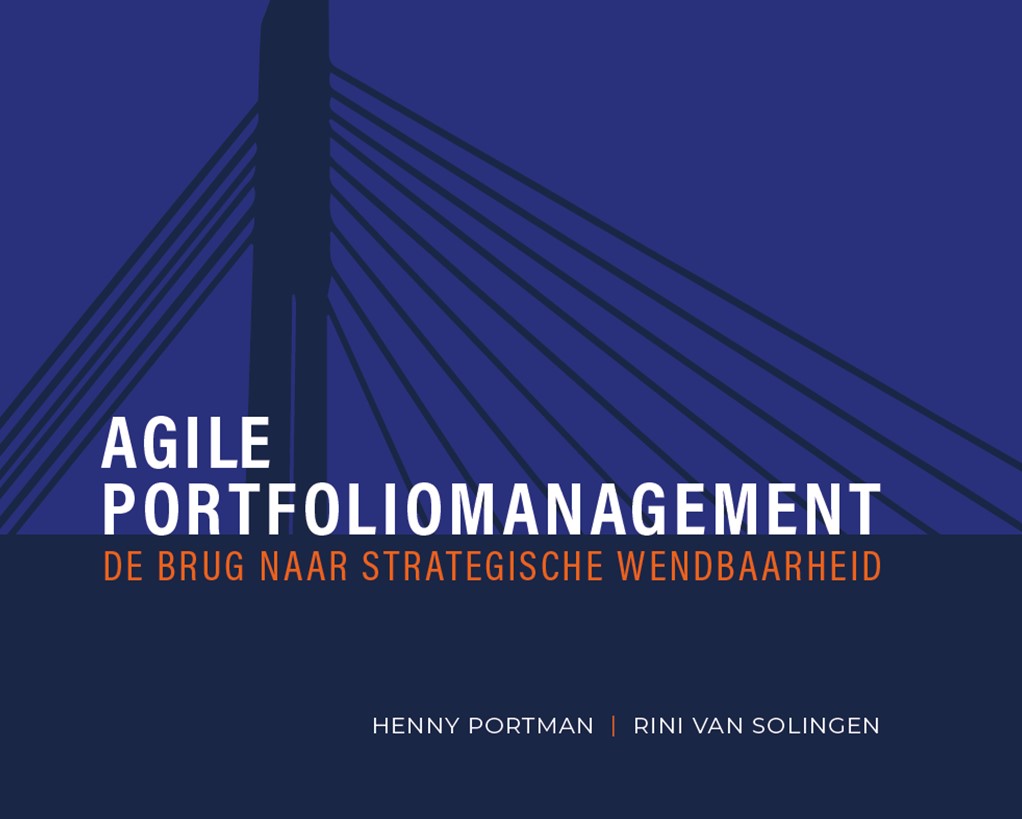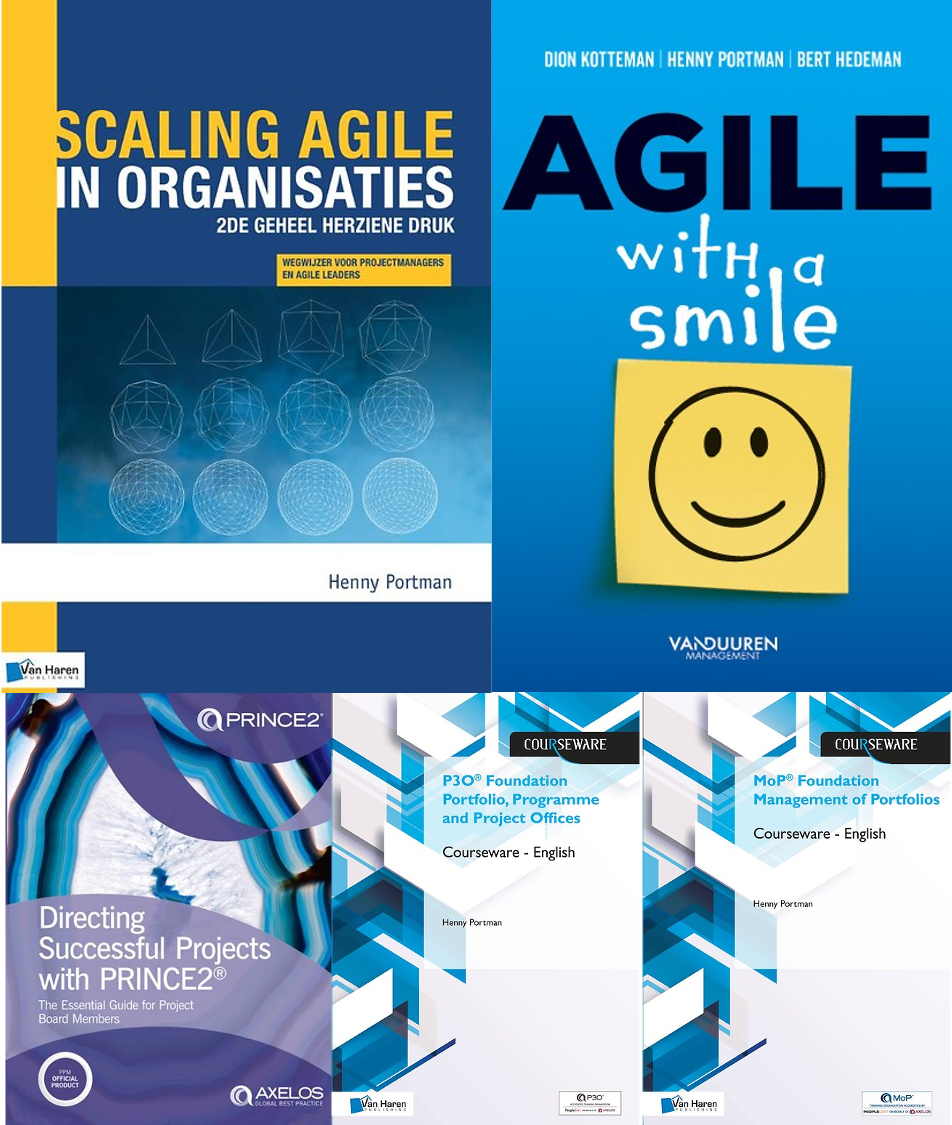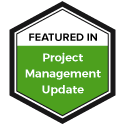Some years ago, you could say “Scrum is agile” and ask “is agile Scrum?” Now we know there is more flesh on the bones. At this moment there are more than fifty known and less known agile approaches, frameworks or methods available. To get a first impression of the different approaches, I try to bring some structure in the jungle to approaches, methods and frameworks. In Figure 1, I position the best-known agile approaches in a structure. The approaches, frameworks or methods are positioned within the ‘One-time programs / projects’ sections or within ‘Business as usual’ / indefinite, or both. Fig. 1 Overview agile approaches, frameworks and methods[1]
Fig. 1 Overview agile approaches, frameworks and methods[1]
On the other side the approaches, frameworks or methods are clustered around team, product or programme and portfolio level. In the dark blue boxes in Figure 1 we see agile approaches that are only applicable in IT-focused organizations. All other approaches can be used within IT and non-IT-oriented organizations (light blue coloured). I haven’t mapped all the known approaches, frameworks and methods in this figure, and to be honest, I think there is a lot of duplication and probably commercial drivers play a role too to ‘develop’ the next kid on the block without added value in comparison with the existing approaches, frameworks or methods.
The team level, including Scrum and Kanban, is applicable in both IT-oriented and non-IT-oriented products and services development and operations. The engineering level focuses specifically on IT-oriented product development. The one-time, temporary projects and programme frameworks and methods are suitable for both IT and non-IT. The permanent umbrella frameworks (both product-targeted and team-targeted) focus specifically on IT and product development and the Culture-targeted approaches help organisations to increase their agility.
In the rest of the article all individual approaches, frameworks and methods are briefly explained. To download the complete article: pmwj87-Nov2019-Portman-birds-eye-view-on-agile-forest (extended 2020-04) v1.5
[1]This picture is based on a older version in the book Scaling Agile in organizaties (Portman, 2020)
















Pingback: New PM Articles for the Week of January 7 – 13 | The Practicing IT Project Manager
Pingback: Reading List for Project Managers #2: Time Management
Pingback: AGILE NXT FUTURE FRIDAY 2019 | Henny Portman's Blog
Pingback: The Agile Fluency model | Henny Portman's Blog
Pingback: Review: An Introduction to Evidence-Based Portfolio Management | Henny Portman's Blog
Pingback: The Toyota flow system | Henny Portman's Blog
Pingback: SAFe 5.0 brief preview | Henny Portman's Blog
Pingback: Agendashift, a new tree in the agile forest | Henny Portman's Blog
Pingback: Heart of Agile: a missing tree in my bird’s eye view on the agile forest | Henny Portman's Blog
Pingback: A Project Manager's Guide to 42 Agile Methodologies - The Digital Project Manager
Pingback: Review: An Introduction to Evidence-Based Portfolio Management - GLOBAL | Van Haren Publishing
Pingback: Business Agility model | Henny Portman's Blog
Pingback: Review: An Introduction to Evidence-Based Portfolio Management - Vanharen Learning Solutions
Pingback: Review: An Introduction to Evidence-Based Portfolio Management • Van Haren Community
Pingback: Strefa PMI - 50 shades of gray between agile and waterfall
Pingback: 41 Comprehensive Agile Methodologies For Project Managers To Know - MrPranav.com